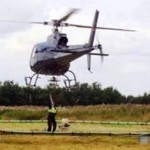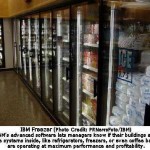
Scotts Valley, California – FPC’s (Fusion Power Corporation) President, Dr. Charles Helsley, announced today that the Corporation will present its plans for a Fusion Power plant, a ‘StarPower Energy Complex’, at an international symposium to be held in Darmstadt, Germany later this month. Departing from other fusion systems, the FPC – HIF design avoids the known problems and shortcomings of magnetic confinement fusion and laser-driven Inertial Confinement Fusion (ICF). Instead, the FPC design is based upon the heavy-ion-accelerator driver, the internationally favored ICF driver approach, to supply the instantaneous source of high amounts of energy to initiate the fusion reaction.
“Power production from nuclear fusion can be realized in the near term using technologies in wide-spread use today,” said Chief Technology Officer, Dr. Robert Burke. “The ability of high-energy particle accelerator systems to ignite fusion burn in commercial settings has been known internationally since the mid-1970s. Accelerators routinely focus energetic beams to sub-millimeter spots, a size matching the requirement of fusion targets. Moreover, standard features of accelerators include rapid pulsing, efficient conversion of wall-plug electricity to beam energy, reliable 24/7 operation, and lifetimes as long as their users want. It now is time to apply this technology and the lessons learned from the National Ignition Facility, and start producing fusion energy for commercial purposes,” said Burke.
Fusion was first demonstrated in 1952. Research on inertial confinement fusion (ICF), began at the Livermore National Laboratory in 1962. The HIF process was discovered jointly at the Argonne and Brookhaven National Laboratories in 1975 and has been confirmed in Germany in the 1990’s. Dr. Burke led Argonne’s HIF team from 1976 to 1980.
Drs. Burke and Helsley will present papers at the 18th International Symposium on Heavy Ion Inertial Fusion (HIF 2010) in Darmstadt, Germany August 30 – September 3, 2010. Their presentations at the conference will provide impetus for the international HIF community to refocus their efforts on HIF’s ability to meet the need of commercial energy production.

“We have completed the scientific study and are now in the process of engineering the design for the first facility to produce 20 to 35 GWe. This is an exciting step forward to meet the energy needs of the US and the world without carbon emissions or a significant radioactive waste problem.” said Dr. Helsley. Helsley went on to say, “Accelerator developments over the past three decades, producing CERN’s Large Hadron Collider (LHC), Brookhaven National Laboratory’s Relativistic Heavy Ion Collider (RHIC), and Germany’s Helmholtz GSI heavy ion accelerator complex, have made the HIF job substantially more straightforward.”
HIF is the ultimate of clean energy producers. The power chambers are protected from fusion’s intense neutron emission by thick walls of flowing liquid metal. Intercepting the neutrons in liquid walls internal to the chamber, frees the FPC-HIF design from the need to find materials able to withstand the neutron bombardment a need that makes commercialization of magnetically confined fusion problematic. The liquid walls also minimize the generation of radioactive waste to a level consistent with the great promise of fusion energy. FPC plans to bring HIF on line within ten years.
About Fusion Power Corporation (FPC)
Fusion Power Corporation (FPC), a California corporation located in Scotts Valley, was formed in early 2009 to pursue the opportunity to commercialize HIF technology in the US and internationally. FPC has the exclusive worldwide right to license the patent-pending Single Pass HIF intellectual property with the goal of:
1) completing the detail design for the development of the Single Pass HIF Energy System within two to three years;
2) having the first US commercial Energy Complex operating by 2020; and
3) driving worldwide adoption of this Energy Solution thereafter.
For more information, visit www.fusionpowercorporation.com.
Source: Fusion Power Corporation Press Release dated August 12, 2010.







